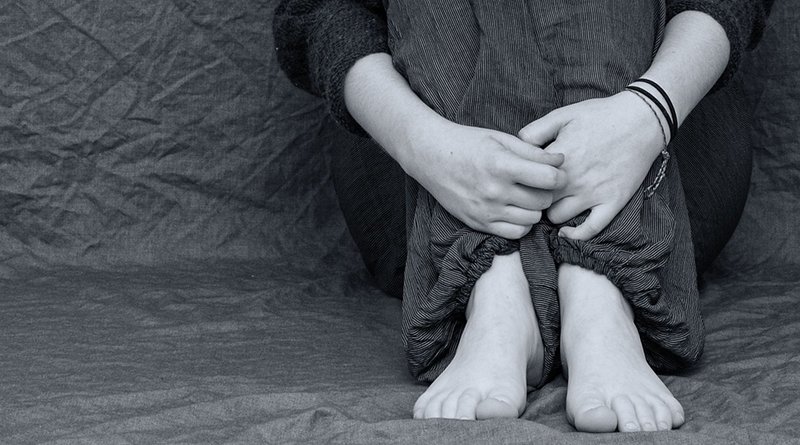The Menace Of Human Trafficking: A Canadian Perspective
By IDN
By Anusha Jaura-Sindhwani*
Human trafficking is a growing and prevalent crime, and it is happening on a global level, in cities and in local communities every day. Human trafficking includes recruiting, harbouring or controlling a person’s movement and activities by using force, coercion and deception. The victims are children and youth under the age of 18 and they are forced into sexual activities and sexual exploitation for the purpose of financial gains of a third party.
Youth are most likely to be lured into trafficking in exchange for basic needs, money, drugs and or alcohol. The age ranges from 12-18 for victims of human trafficking and according to statistics, females are 90% more likely to be trafficked.
It is important to note that human trafficking doesn’t necessarily involve crossing borders and it happens within our own cities and in local communities. It has become a multi-billion-dollar industry and the fastest growing crime in the world. It is also undoubtedly a fundamental human right violation that prevents a victim from having any say or control over his/her movements and activities.
It is referred to as “modern-day slavery” and has been noted that there are more victims of this form of slavery today in the world, than in any given time in history.
Human Trafficking occurs in every continent, in every part of the world and across all different kinds of race, ethnicity and even socio-economic status.
Human trafficking doesn’t always involve physical violence, as many times the trafficker can play on the vulnerability of the victim, by posing to be a partner to them or use emotional abuse and manipulation to sexually exploit them. Victims can also be trafficked by their family, friends or those who are known to them and in a position of trust and authority.
Risk Factors
A large number of children and youth trafficked come from a child welfare system, those who were in foster homes or those who had come from trauma or a dysfunctional home with low to no stability. There is a high rate of victims that are homeless, live in group homes or shelters and suffer from mental health or substance abuse.
Identifying Human Trafficking
In looking for those who may be trafficked one can note the following signs:
- They cannot speak for themselves, are often with someone who is watching them, monitoring their moves and often speaking for them.
- They can appear to be fearful, anxious or paranoid.
- They are working long hours in poor conditions with health and hygiene issues.
- They are scared of authorities and show signs of physical abuse or injuries but don’t want to seek medical attention.
- They can have tattoos known as “branding”, by their trafficker who can also be their partner.
- They could have been reported as missing by family/friends.
Complicating Factors
The fear of leaving an abusive relationship or a trafficker is very real and should not be discounted or minimized, as it is often more dangerous to leave than to stay for victims of trafficking.
Firstly, a victim is dependent on their trafficker, both emotionally and financially.
They may not also see themselves as trafficked or victims of abuse, as they have formed emotional relations with their traffickers. This leads them to believe they are in a relationship and it becomes more problematic when they feel “indebted” to them.
There is also the fear of leaving and what follows after, they are often threatened that if they were to leave or report, they or their families could be harmed or killed.
Response, what needs to be done?
As a global effort, a lot needs to be done for those who are being trafficked and that includes, prevention, protection and prosecution.
Prevention includes the need for more work, training, and knowledge across all sectors of the government, within law enforcement, emergency services, child and women services and the education field.
Protection is key for those who are seeking to leave and transition into a life free of violence and exploitation. The legal systems need to work together and collaborate for more positive outcomes for those who are able to leave that world.
Lastly, it’s crucial to prosecute the offenders and to create a system within law enforcement and the courts, where there is accountability for those who are exploiting victims for their own financial gains.
The response to human trafficking can vary in every country but the global response and goal should ultimately be the same. We all need to do our part, in learning about it, identifying it and speaking up to raise the issue and bring it to the forefront for everyone. If we can all do this, as a community, a system, or level of government then we have the opportunity to combat this crime against humanity. [IDN-InDepthNews – 07 April 2021]
* Anusha Jaura-Sindhwani is a social worker with the Children’s Aid Society of Toronto. Her areas of expertise include domestic violence and its impact on children. In addition, she is a chair on the Suicide Panel and consults with staff who have youth on their cases, at risk of suicide.
Human trafficking is one of the United Nations’ 17 Sustainable Development Goals (SDGs) with 169 targets endorsed by the international community in 2015. Goal 8.7 aims at “immediate and effective measures to eradicate forced labour, end modern slavery and human trafficking and secure the prohibition and elimination of the worst forms of child labour, including recruitment and use of child soldiers, and by 2025 end child labour in all its forms”. Anusha’s Canadian perspective is based on 20 years of experience in the child welfare sector. She is also on the Human Trafficking Committee which looks at prevention and supporting youth at risk of trafficking.

